Today we are looking at the Fanxiang S660 4TB SSD. This is the third in my Fanxiang series, and I have previously looked at their S770 and S880 drives. We started looking into Fanxiang because Patrick began to run into their brand drives out in the wild, and because nobody else seems to be covering them. While The S770 was a fairly performant drive, and the S880 was a competent DRAM-less drive, the S660 is very much targeted at the budget market. This drive is available in a 4TB capacity point which for most consumers represents a very large SSD, and it does so at a very low price point. Let us see how it does!
Fanxiang S660 4TB NVMe SSD
Similar to previous Fanxiang drives, they get points in my book for the accessories. The S660 packaging actually includes a heatsink that users can install for themselves, along with all the thermal pads, a tiny screwdriver, and M.2 screw.
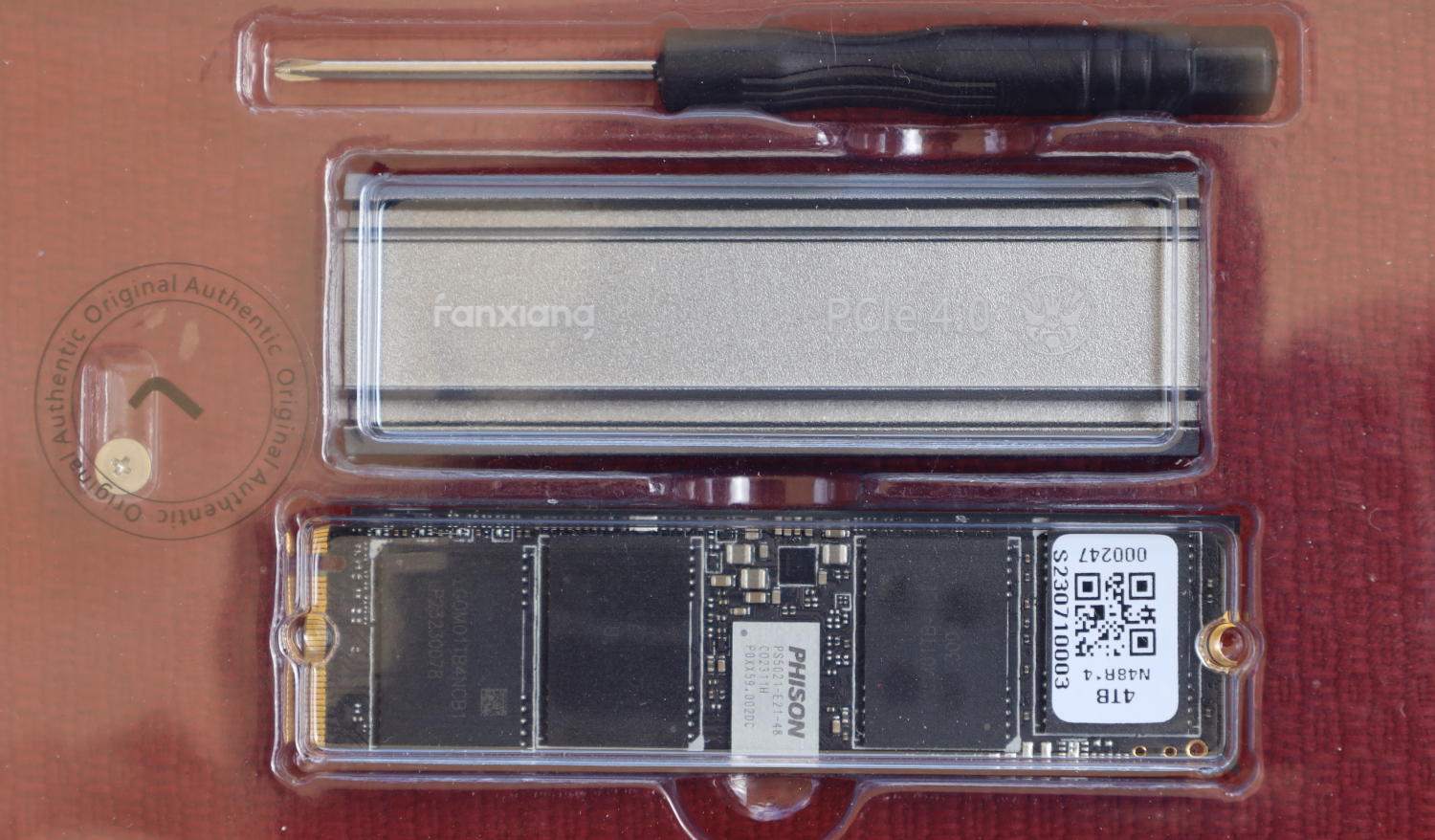
As for the drive itself, the Fanxiang S660 4TB comes in a single-sided M.2 2280 (80mm) form factor.

The S660 sports a Phison PS5021-E21T controller, similar to that seen in the Crucial P3 Plus. The NAND is supplied by Micron and is 176-layer QLC, and there is no DRAM cache. Similar to the S770, the front of this drive does not have a full drive label, so the components are quite easy to see.

The rear of the S660 is where Fanxiang has actually placed the product label. Since this is a single-sided drive, nothing else is on the back of the drive. The placement of the label does not matter, except for curiosity’s sake.
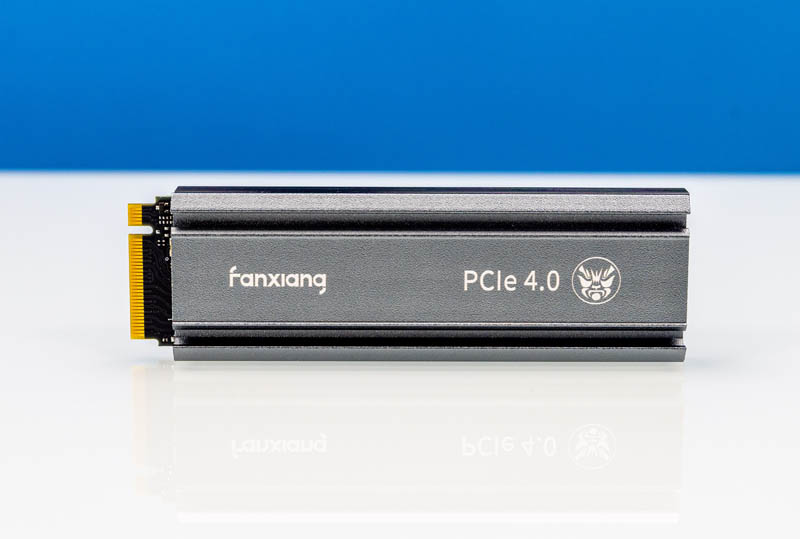
If you install the drive in the heatsink you get a Fanxiang logo to look at!
Fanxiang S660 SSD Specs
The spec sheet says the Fanxiang S660 is available between 500GB and 4TB capacities.
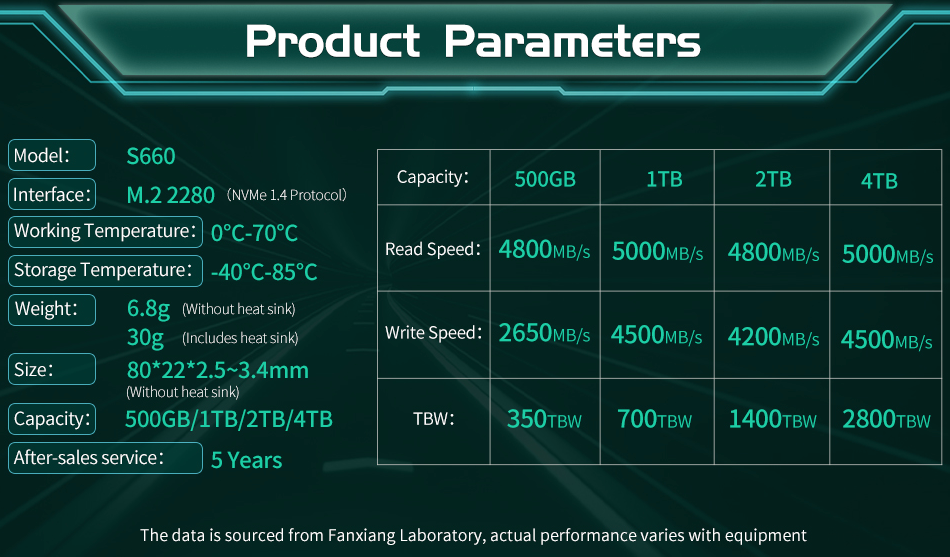
My review model is the 4TB, which boasts moderate specs for a PCIe Gen 4 drive at 5000 MB/s read and 4500 MB/s write. Endurance for this drive is rated at 2800 TBW, which slightly exceeds my expectations for a drive of this capacity. Fanxiang also boasts a 5-year warranty, or at least that is what it says on the box. Like previous Fanxiang drives, this one is not actually listed on the Fanxiang website. That makes it somewhat difficult to find information outside of the Amazon listing, so I take their warranty coverage with a grain of salt.
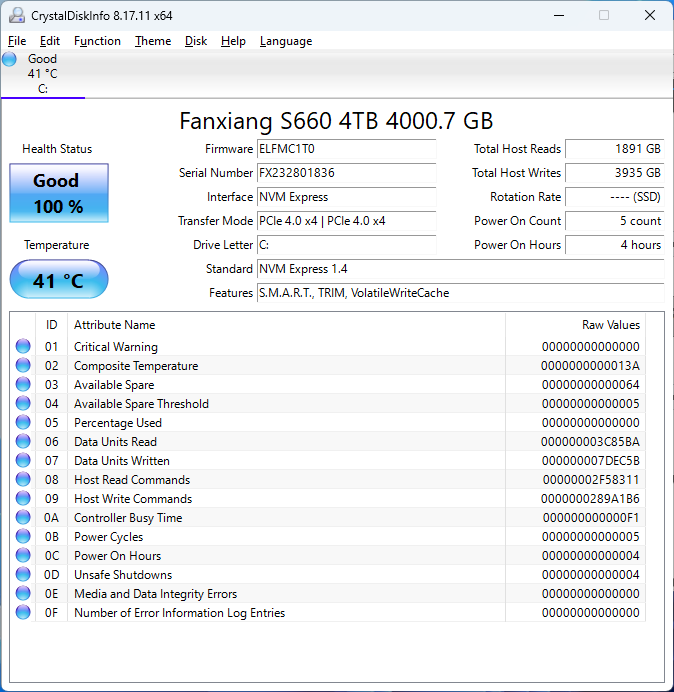
CrystalDiskInfo can give us some basic information about the SSD and confirms we are operating at PCIe 4.0 x4 speeds using NVMe 1.4.
Test System Configuration
We are using the following configuration for this test:
- Motherboard: MSI MAG X670E Tomahawk
- CPU: AMD Ryzen 9 7900X (12C/24T)
- RAM: 2x 16GB DDR5-6000 UDIMMs
Our testing uses the Fanxiang S660 4TB as the boot drive for the system, installed in the M.2_1 slot on the motherboard. This slot supports up to PCIe Gen 5 x4. The drive is filled to 85% capacity with data, and then some is deleted, leaving around 60% used space on the volume.
Next, we are going to get into our performance testing.

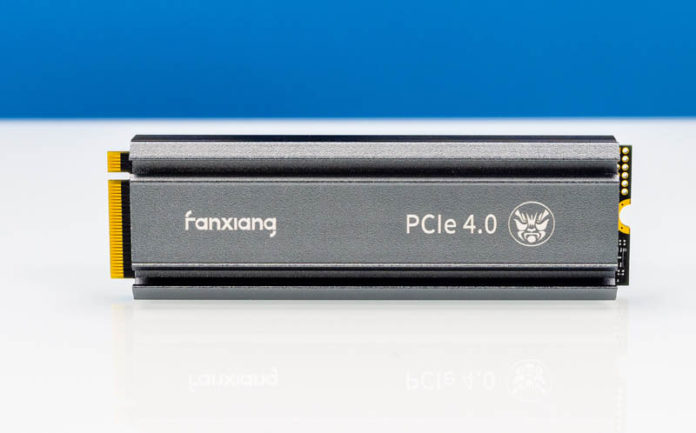



To me it looks like the S660 is suffering from significant write amplification after its used up its SLC cache. Could that be the result of a firmware bug?
My emulators are currently on an old mechanical drive and I’ve recently been getting HD and 4K texture packs for my old PS2 and GameCube games and the mechanical drive just isn’t great for loading these new texture packs so I figured I’d grab a regular 2.5″ SSD. I was thinking about going with a 4TB just for the extra space to also install my PC games to. While searching I find that 4TB SATA SSDs are going for roughly the same price as this NVMe drive.
Seeing as how read speeds are more important for my use case I feel like this S660 from fanxiang, not to mention that the when the write speeds tank its pretty much at the levels of a SATA SSD anyway.